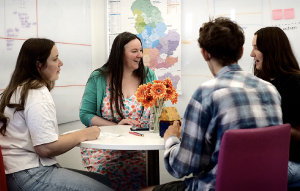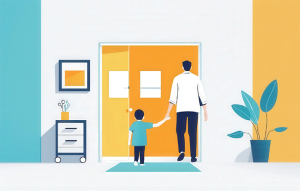Neurodivergent children and young people (CYP) are often faced with significant barriers when trying to access the support they need, especially when it comes to mental health challenges. Long waiting lists, confusing and fragmented pathways and processes leaves families navigating a complex system with little clarity. This has serious consequences, both in the short term and later on in life.
We hosted a panel webinar session with experts in the field to discuss the challenges and opportunities for implementing a needs-led and person-centred approach. One that fully supports children and their families to drive the best outcomes.
You can watch the recording of the session here.
Understanding the current challenges
Ross O’Brien, an independent advisor with over two decades of NHS experience, explained how referral processes for neurodiversity assessments (particularly autism and ADHD), are often vague and inconsistent across the country. This leaves parents unsure whether their child has ended up on the right pathway, or how long they can expect to wait for their child to have their initial assessment.
Similarly, Naomi Williams, a PhD researcher and clinical specialist, studying access to mental health services for neurodivergent CYP, observed that families often have to cycle through services multiple times before being accepted, with pathways that are poorly coordinated between mental health services and neurodiversity services.
Blandine French, a senior research fellow focusing on ADHD and autism, added that healthcare specialists are often not well equipped to address both mental health and neurodevelopmental conditions at the same time – they are trained to focus on one or the other, which makes it difficult for clinicians and services to take a holistic approach. The problem is this fragmentation often means that children may not receive the support they need at the right time, and support they do receive may not be as effective as it could be if services were able to take more of a holistic approach.

Examples of good practice
Despite all of the challenges in this sector, there are some examples of good practice that healthcare providers can continue to focus on to improve access and outcomes for children and young people.
- Involving parents and carers as early as possible. Keeping families involved at every stage of the journey makes them feel like they are partners in the process. Therefore, they will be more aware of what is going on.
- Preparing children for appointments. Before a child enters an appointment, consideration of their sensory needs and explaining what will happen during that appointment can make them feel like they are at the centre of their care.
- Ongoing communication and signposting. Staying well whilst waiting is key, so even when services cannot provide support immediately, they can help families manage. Consistent updates, reminders about workshops, and providing access to useful resources can improve wellbeing until formal help becomes available.
- Digital tools and innovation. There are constantly new innovations being developed which can help provide instant support, guide families through pathways, and reduce administrative burden for clinicians. Examples include emerging triage solutions, games, and AI chatbots.

How can we move towards a needs-led approach?
Our experts identified several key steps that could be implemented to make care fully needs-led and inclusive:
- Integration across services. CYP should be able to seamlessly move between mental health and neurodiversity services as their needs evolve. Bringing the two services closer together would make a huge difference.
- Lifelong support. This would help address gaps when children transition to adult services and ensure that nobody drops out of care.
- Early identification of neurodivergence. Work with education settings, primary care and even nursery settings. The earlier a difficulty or need is recognised, the better the long term outcomes can be for that individual.
- Consideration of lived experience. Having a lived experience voice involved can help ensure services really meet the needs of CYP. This can then inform decision making to support clinicians and services.
- Learn from best practice. If services formed networks between each other and shared latest innovations, it could reduce inconsistencies and enhance overall system architecture.

Creating effective, inclusive pathways for neurodivergent children requires system-wide thinking, creativity, and flexibility. By integrating mental health and neurodevelopmental services, leveraging digital tools, involving families early, and learning from innovative practices, we can provide timely, person-centred support.
For more resources on neurodiversity and mental health, visit the Mayden Hub.
To find out more about how our digital solutions can support your neurodiversity or mental health service, book a demo.


